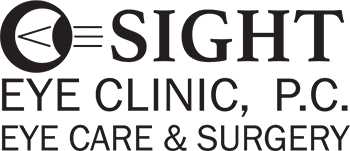Pediatric Eye Care
As with any field of medicine, eye care is always most effective when problems are addressed in their earliest stages. Sure, this can be a matter of an adult having an issue treated early, but it is especially applicable for children.
An important part of pediatric eye care is the role of exams to identify potential—or existing—issues. In the case of children, warning signs include:
- Poor school performance
- Not wanting to go to school
- Difficulty paying attention
- Difficulty when reading and writing
- Trouble seeing information on the chalk board or screen
- Blurry or double vision
- Headaches or eye pain
- Taking longer than normal to complete homework
Even if there are no risk factors or family history of eye problems, children need their vision checked at 6 months, 3 years, and before first grade.
Certain eye issues are particularly common in children. These problems affect and can limit your child’s sight or eye comfort. In some cases, the condition won’t improve or resolve itself without treatment—which could permanently impact your child’s sight. Fortunately, these conditions are highly treatable when they’re caught early, allowing your son or daughter to grow up with healthy eyes and clear vision.
To catch problems and conditions early, we recommend an eye exam that consists of:
- Inspection of the eye: The health care provider inspects the eyes and eyelids, exams the various eye muscle movements, and examines the pupils and the reflection of light from the back of the eye.
- Ophthalmoscope: In older children, the eye care professional examines the back of the eye.
- Corneal light reflex testing: Using a small flashlight, the health care provider looks at spot where the light is reflected from the front surface of the eye, called the cornea. The light reflected should be in sharp focus and centered on both pupils. The test result is abnormal if the corneal light reflex is not crisp and clear, or if it is off-center.
- Cover testing: This test detects misalignment of the eyes. While the child focuses on a target, the examiner covers each eye one at a time to look for a “shift” in the eyes.
- Age appropriate visual acuity testing: Using an eye chart, the examiner asks the child to read numerous lines of characters. It is important to test each eye separately and to be sure that the child is not “peeking” with the other eye.
For more information about child eye care services provided at Sight Eye Clinic—or to set up an appointment for your son or daughter—call our Zeeland office at (616) 772-2020.
